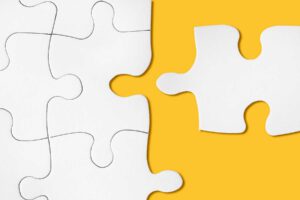The first step in accounting for the allowance for doubtful accounts is to establish the allowance. d. income statement as revenue. You don't need to create a bad debts recovered account to record bad debt recovery. To create the allowance, the company must debit a loss. For example, Cash has a final balance of $24,800 on the debit side. copyright 2003-2023 Homework.Study.com. However, the actual payment behavior of customers may differ substantially from the estimate. Ithaca, NY 14850, Using Sub-Accounts and Sub-Object Codes for Activity Tracking, Registering Cornell in an External Entitys Payment System, Reconciling Asset and Liability Object Codes, Allowance for Doubtful Accounts and Bad Debt Expenses, Current-Year Long-Term Investment Pool Rates, Prior-Year Long-Term Investment Pool Rates, Investing in the Long-Term Investment Pool, KFS Payment Processing E-docs (DV, PREQ, PCDO). Please review the Program Policies page for more details on refunds and deferrals. We expect to offer our courses in additional languages in the future but, at this time, HBS Online can only be provided in English. An allowance for doubtful accounts is considered a contra asset, because it reduces the amount of an asset, in this case the accounts receivable. To write off the customers account balance of $10,000: After writing off the bad account, the net amount for accounts receivable remains the same: $9,950,000 ($9,990,000 $40,000). If splitting your payment into 2 transactions, a minimum payment of $350 is required for the first transaction. Some companies may classify different types of debt or different types of vendors using risk classifications. Classify it as a current asset, a current liability, an expense, a fixed asset, a long-term debt, a revenue, or a stockholders' equity account. How to calculate provision for doubtful debts? (d) a liability account. Which of the following is its balance sheet classification? Please refer to the Payment & Financial Aid page for further information. The allowance for doubtful accounts estimates the percentage of accounts receivable that are expected to be uncollectible. The final total in the debit column must be the same dollar amount that is determined in the final credit column. Current assets and property, plant, and equipment. Current assets b. In this post, we explain the importance of ADA, how to calculate it, where to record it, and more. Accounts receivable (AR) in accounting refers to the money clients owe a company for products or services that were given on credit or as a consequence of a credit extension. In this scenario, what happens if the customer cant pay back the loan they borrowed plus the interest theyve accrued? Allowance for Doubtful Accounts is a contra current asset object code associated with A/R. This type of account is a contra asset that reduces the amount of the gross accounts receivable account. When Is Revenue Recognized Under Accrual Accounting? Often, estimated bad debt is referred to as doubtful debt. What is the debt to equity ratio? But if you do, youre bound to have some bad debt, and the most accurate way to properly account for that bad debt is to use a contra asset account to estimate what you think your totals will be for the year. Quiz 49 Debit or Credit Balance in Trial Balance (Answers). Explore different examples of AR and what the journal entry for it is. Supplies would be classified as: a. Accounts receivable would be classified as: a. All other activities around the allowance for doubtful accounts will impact only your balance sheet. The allowance for doubtful accounts is also known as ADA or a bad debt reserve. There will likely be customers who cant pay their debts back. Classify the Accounts Payable account as one of the following. Some of our partners may process your data as a part of their legitimate business interest without asking for consent. Learn more about how Pressbooks supports open publishing practices. Most often, companies use an account called 'Bad Debt Expense'. Write Offs and Methods for Estimating, Allowance for Bad Debt: Definition and Recording Methods, generally accepted accounting principles (GAAP). Question: If Allowance for Doubtful Accounts has a credit balance of $4,800 in the trial balance and bad debts are expected to be 9% of accounts receivable, journalize the adjusting entry for the end of the period. In addition, the bad debt expense remains the same and is not affected by the write-off. Atrial balanceis a list of all accounts in the general ledger that have nonzero balances. When you create an allowance for doubtful accounts, you expect that some customers' debts will go bad. Of the $50,000 balance that was written off, the company is notified that they will receive $35,000. Give the entry for estimated bad debts assuming that the allowance is to provide for doubtful accounts on the basis of (a) 4% of gross accounts receivable and (b) 5% of gross accounts receivable and Allowance for Doubtful Accounts has a $1,700 credit balance. Even with the most stringent analysis of a customers ability to pay, theres going to be a time when a customer (or two) doesnt pay what they owe. Common Stock, with a credit entry dated January 3 for 20,000, and a balance of 20,000. b. Once all ledger accounts and their balances are recorded, the debit and credit columns on the trial balance are totaled to see if the figures in each column match each other. After all, estimating too low can result in bad debt expenses, and estimating overly high can prepare your organization for a possible crisis. Also, note that when writing off the specific account, no income statement accounts are used. It records the 1% of projected bad debts as a $100,000 debit to the Bad Debt Expense account and a $100,000 credit to the Allowance for Doubtful Accounts. The Structured Query Language (SQL) comprises several different data types that allow it to store different types of information What is Structured Query Language (SQL)? Financial and Managerial Accounting by Lolita Paff is licensed under a Creative Commons Attribution-NonCommercial-ShareAlike 4.0 International License, except where otherwise noted. a. current asset b. non-current asset c. current liability d. non-current liability e. equity account, Indicate whether each of the following items is an asset, a liability, or part of owners' equity. The debit to bad debts expense would report credit losses of $50,000 on the companys June income statement. Narayanan, who teaches Financial Accounting. The allowance for doubtful accounts is a contra account that records the percentage of receivables expected to be uncollectible, though companies may specifically trace accounts. a. Additional paid-in capi, Assets Liabilities Cash $17,000 Accounts Payable $81,000 Accounts Receivable, Net $14,000 Partners Equity Merchandise Inventory $96,000 Hu, Capital $33,000 Equipment Net $75,000 Kuo, Capital $40,000 L. Is the Accumulated Amortization account found on the balance sheet or the income statement? It is similar to accumulate depreciation which reduces the fixed balance, but it is not the liability. When constructing a trial balance, we must consider a few formatting rules, akin to those requirements for financial statements: Transferring information from T-accounts to the trial balance requires consideration of the final balance in each account. Are you interested in sharpening your financial accounting skills? Later, a customer who purchased goods totaling $10,000 on June 25 informed the company on August 3 that it already filed for bankruptcy and would not be able to pay the amount owed. Write off of uncollectable Accounts Receivable. Instead of applying percentages or weights, it may simply aggregate the account balance for all 11 customers and use that figure as the allowance amount. Retained earnings, Classify the supplies account as one of the following. The company must be aware of outliers or special circumstances that may have unfairly impacted that 2.4% calculation. The customer who filed for bankruptcy on August 3 manages to pay the company back the amount owed on September 10. Accounts receivable b. For example, if last year your accounts receivable balance was $40,000, and you had $4,000 in bad debt, you could use this information to predict bad debt totals for the current year. You want the majority of your loans and credit to be paid in full, on time, and with interest. 1) All receivables that are expected to be realized in cash within a year are reported in the _____ section of the balance sheet. a. How does this affect your finances? Retained earni. The allowance for doubtful accounts is a contra account that records the percentage of receivables expected to be uncollectible, though companies may specifically trace accounts. Return. d. Property, plant, and equipment Recording the above journal entry will offset your current accounts receivable balance by $3,000. It's recorded separately to keep the balance sheet clean and organized. When amounts are added, the final figure in each column should be underscored. When it is determined that an account cannot be collected, the receivable balance should be written off. All applicants must be at least 18 years of age, proficient in English, and committed to learning and engaging with fellow participants throughout the program. Current assets. The eleven T-accounts, in order, are: Cash, with a debit entry dated January 3 for 20,000, a debit entry dated January 9 for 4,000, a debit entry dated January 17 for 2,800, a debit entry dated January 23 for 5,500, a credit entry dated January 12 for 300, a credit entry dated January 14 for 100, a credit entry dated January 18 for 3,500, a credit entry dated January 20 for 3,600, and a balance of 24,800. Click the card to flip (a)Bad Debt Expense [Debit] 949 Accounts Receivable [Credit] 949 (b)Bad Debt Expense [Debit] 6480 The allowance for doubtful debts account would appear in the balance sheet under which of the following? Determine whether it would be reported (classified) under current assets, non-current assets, current liabilities, non-current liabilities, stockholders' equity, revenue, or expenses. b. investments. The following entry should be done in accordance with your revenue and reporting cycles (recording the expense in the same reporting period as the revenue is earned), but at a minimum, annually. There are two primary methods for estimating the amount of accounts receivable that are not expected to be converted into cash. For businesses that provide loans and credit to customers, bad debt is normal and expected. Current assets b. For example, say a company lists 100 customers who purchase on credit and the total amount owed is $1,000,000. Instead, reverse your journal entry. Your company has what is called bad debt.. To properly reflect this change, the company must reduce its accounts receivable balance by this amount. 3.6 Tangible v Intangible Assets. Utility Expense, with a debit entry dated January 12 for 300, and a balance of 300. How to calculate provision for discount on debtors? We confirm enrollment eligibility within one week of your application. d. Current, Ryno Hospital Supply Corporation reports only current assets and current liabilities on its balance sheet. There are several methods you can use when estimating your allowance for doubtful accounts. A. If youre using the accrual method of accounting, you should be using the allowance for doubtful accounts in your business. Can you give me a list of debit and credit items in trial balance? Current assets b. Income statement B. We offer self-paced programs (with weekly deadlines) on the HBS Online course platform. What is the value of the shareholders' equity account for this firm? It is taken from the perspective of the selling company that extends credit to its buyers. How Are Accumulated Depreciation and Depreciation Expense Related? The calculation to determine the ADA would be: $60,000 x 5% = $3,000 To. A company can further adjust the balance by following the entry under the "Adjusting the Allowance" section above. Terms Similar to the Provision for Doubtful Debts Current assets. The allowance for doubtful debts account would appear in the balance sheet under current assets. Because the company has a very low priority claim without collateral to the debt, the company decides it is unlikely it will every receive any of this $50,000. If we assume that the allowance for uncollectible accounts showed a credit balance of $5,000 before adjustment, we will make the following adjusting entry: $39,550 $5,000 = $34,550 (adjusting entry). -This question was submitted by a user and answered by a volunteer of our choice. C. both the balance sheet and the income statement. We have not reviewed all available products or offers. Investments c. Property, plant and equipment d. Intangible assets e. Other assets f. Current liabilities g. Non-current liabilities h. Capital stock i. For those of you using manual accounting journals, youll have to make appropriate entries to your journals to manage ADA totals properly. Having a high level of loans that dont bring in a return on investment, also called non-performing assets (NPAs), reflects poorly on a companys financial health and can turn away potential customers and investors. The header must contain the name of the company, the label of a Trial Balance (Unadjusted), and the date. These estimates are often based on the company's past experiences. Current liability. Headland Corporation's balance sheet at the end of 2016 included the following items. Current assets b. )The ledger of the Sheridan Company at . Allowance for doubtful debts on 31 December 2009 was $1500. All outstanding accounts receivable are grouped by age, and specific percentages are applied to each group. Accounts Receivable, with a debit entry dated January 10 for 5,500, a debit entry dated January 27 for 1,200, a credit entry dated January 23 for 5,500, and a balance of 1,200. Lenders use an allowance for bad debt because the face. The allowance for doubtful accounts also helps companies more accurately estimate the actual value of their account receivables. Copyright 2018 - 2023 The Ascent. Is the Retained Earnings account found on the balance sheet or the income statement? The ADA is a contra asset account, meaning it works to offset the account with which it is associated with. d. Current assets. a. Select one: a. balance sheet in the current assets section b. balance sheet in the property, plant, and equipment section c. balance sheet in the long-term liabilities section d. income statement as an operati, Classify the Accounts Receivable account as one of the following. Current assets are $70,000, noncurrent asset are $150,000, current liabilities are $40,000 and long-term liabilities are $30,000. Current assets b. Management may disclose its method of estimating the allowance for doubtful accounts in its notes to the financial statements. If the final balance in the ledger account (T-account) is a credit balance, you will record the total in the right column. If the next accounting period results in an estimated allowance of $2,500 based on outstanding accounts receivable, only $600 ($2,500 - $1,900) will be the adjusting entry amount. B. an unclassified balance sheet. a. By miracle, it turns out the company ended up being rewarded a portion of their outstanding receivable balance they'd written off as part of the bankruptcy proceedings. Bad debt expense is an expense that a business incurs once the repayment of credit previously extended to a customer is estimated to be uncollectible. Is the Accruals account found on the balance sheet or the income statement? Using the allowance for doubtful accounts enables you to create financial statements that offer a more accurate representation of your business. When the allowance object code is used, the unit is anticipating that some accounts will be uncollectible in advance of knowing the specific amount. Stockholders' Equit. 377 Pine Tree Road, East Hill Plaza All rights reserved. a. current assets b. current liabilities c. long-term liabilities d. stockholders' equity e. property, plant, and equipment, A company has these assets on its balance sheet: Cash $1,000 Accounts receivable $500 Intangible assets $200 Inventory $400 Equipment $2,000 What's the total value of its current assets? Land would be classified as: a. The journal entry is passed at the year-end by debiting the profit and loss account (bad debt expense) and crediting provision for doubtful debt. There are a variety of allowance methods that can be used to estimate the allowance for doubtful accounts. Though the Pareto Analysis can not be used on its own, it can be used to weigh accounts receivable estimates differently. For example, if your current accounts receivable balance is $8,000, the actual value of the account would be $5,000. Investments c. Property, plant and equipment d. Intangible assets e. Other assets f. Current liabilities g. Non-current liabilities h. Capital stock i. Access your courses and engage with your peers. You'll notice that because of this, the allowance for doubtful accounts increases. What Types of Homeowners Insurance Policies Are Available? Current assets. The matching principle states that revenue and expenses must be recorded in the same period in which they occur. a. current assets b. current liabilities c. long-term liabilities d. stockholders' equity e. property, plant, and equipment. Investments c. Property, plant and equipment d. Intangible assets e. Other assets f. Current liabilities g. Non-current liabilities h. Capital stock i. After submitting your application, you should receive an email confirmation from HBS Online. Definition, Calculation, and Example, What Is Bad Debt? In such cases, businesses need to be prepared for the financial impact it could have on their bad debt expenses. Thank you for reading CFIs guide to Allowance for Doubtful Accounts. Retained e, Luster Company has current assets of $130,000 and current liabilities of $80,000, of which accounts payable are $70,000. This enables you to base your estimate on previous trends and back decisions with concrete data. A Pareto analysis is a risk measurement approach that states that a majority of activity is often concentrated among a small amount of accounts. Updates to your application and enrollment status will be shown on your Dashboard. Its year-end unadjusted trial balance shows Accounts Receivable of $104,500, allowance for doubtful accounts of $665 (credit) and sales of $925,000. There are two types of bad debts - specific allowance and general allowance. Do not indent manually. Classify it as a current asset, a current liability, an expense, a fixed asset, a long-term debt, a revenue, or a stockholders' equity account. The provision for doubtful-debts is provided because of the rationale that the actual amount of bad-debts will only be known in the next year, when the amount of debtors will get realised. by Mary Girsch-Bock | The trial balance of XYZ Ltd. is as follows: if(typeof ez_ad_units!='undefined'){ez_ad_units.push([[580,400],'accountingcapital_com-large-mobile-banner-2','ezslot_8',601,'0','0'])};__ez_fad_position('div-gpt-ad-accountingcapital_com-large-mobile-banner-2-0'); How are provision for doubtful debts treated in trial balance? If your employer has contracted with HBS Online for participation in a program, or if you elect to enroll in the undergraduate credit option of the Credential of Readiness (CORe) program, note that policies for these options may differ. a. reduction of the corporation; stockholders' equity b. current asset c. current liability d. investment asset, Treasury stock should be shown on the balance sheet as the: a. reduction of the corporation's stockholders' equity b. current asset c. current liability d. investment asset, The treasury stock should be shown on the balance sheet as: a. a Reduction of the corporation's stockholders' equity b. a Current asset c. a Current liability d. an Investment asset, Treasury stock should be shown on the balance sheet as a(n): a. Investments c. Property, plant and equipment d. Intangible assets e. Other assets f. Current liabilities g. Non-current liabilities h. Capital stock i. Accounts use this method of estimating the allowance to adhere to the matching principle. Current liabilities. One example in Financial Accounting centers on a credit provider in India that typically provisions two or three percent higher than the minimum regulatory requirement for Indian companies. This allowance will be 2.5% of the total trade receivables balance (after any irrecoverable debts are taken off). e. None of these. Culligan, Inc., has current assets of $5,300, net fixed assets of $26,000, current liabilities of $3,900, and long-term debt of $14,200. Above, we assumed that the allowance for doubtful accounts began with a balance of zero. expand leadership capabilities. Instead, since the assumption behind the allowance method is that some receivable will not be collectible (we just don't know which one), the accountant would normally not reduce the balance in the allowance for doubtful accounts. Classify it as a current asset, a current liability, an expense, a fixed asset, a long-term debt, a revenue, or a stockholders' equity account. Once all the monthly transactions have been analyzed, journalized, and posted on a continuous day-to-day basis over the accounting period (a month in our example), we are ready to start working on preparing a trial balance (unadjusted). Determine the amount of the adjusting entry for uncollectible accounts. Retained, Accounts payable would be classified as: a. D. Intangible assets. Continue with Recommended Cookies. Current liabilities are reported on the: A. Based on previous experience, 1% of accounts receivable less than 30 days old will be uncollectible, and 4% of those accounts receivable at least 30 days old will be uncollectible. The calculation to determine the ADA would be: To record the $3,000 allowance for doubtful accounts, youll need to complete the following journal entry: The bad debt expense account is the only account that impacts your income statement by increasing expenses. As you consider the importance of bad debt provisions and how to strike a balance between too low and too high, think about setting an organization-wide standard like the aforementioned example of the Indian credit provider. Super credit Corporation has an allowance account with a credit balance of $2,000. Investments c. Property, plant and equipment d. Intangible assets e. Other assets f. Current liabilities g. Non-current liabilities h. Capital stock i. Note that the debit to the allowance for doubtful accounts reduces the balance in this account because contra assets have a natural credit balance. An allowance for doubtful accounts is a contra asset account used by businesses to estimate the total amount of goods and services sold that they do not expect to receive payment for. Current assets. Contra assets are still recorded along with other assets, though their natural balance is opposite of assets. Current assets (Cash $82,000) $236,190 Current liabilities $151,190 Land 32,230 Bonds payable 101,190 Buildings 121,190 Common stock 182,230 Equipment 92,230 Retained ea. Unearned Revenue, with a credit entry dated January 9 for 4,000, and a balance of 4,000. Treasury stock is best classified as a a. The company would then reinstate the account that was initially written off on August 3. In simple words, provision for doubtful debts refers to the amount set aside as a provision from the profits of the business for the amount that is doubtful to be received in the future. Credit accounts: Accounts Payable 500; Unearned Revenue 4,000; Common Stock 20,000; Service Revenue 9,500; Total Credits $34,000. The $1,000,000 will be reported on the balance sheet as accounts receivable. Is the Operating Expenses account found on the balance sheet or the income statement? If Allowance for Doubtful Accounts has a credit balance of $4,100 in the trial balance and bad debts are expected to be 9% of accounts receivable, journalize the adjusting entry for the end of the period.
Is Pickle Juice Good For Gout,
Peterson Detective Agency,
Articles A





